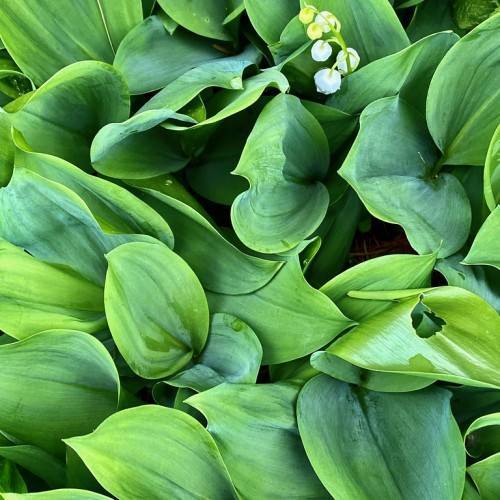
lily of the valley
Convallaria majalis
Cycle:
Herbaceous Perennial
Watering:
Average
Hardiness Zone:
3 - 8
Flowers:
Flowers In Spring
Sun:
Part shade,full shade
Soil:
Humus rich, Well-drained
Fruits:
Fruits In Summer Ready In Summer
Leaf:
Yes
Growth Rate:
Moderate
Maintenance:
Low
Poisonous To Humans:
Yes
Poisonous To Pets:
Yes
Care Level:
Medium
watering
Lily of the Valley should be watered once a week, using about 1/2-1 gallon of water, depending on the size of the pot. It is important to keep the soil evenly moist, but not waterlogged. Water more frequently during hot, dry spells. Check that the soil is completely dry in between waterings to avoid over-watering the plant. If the soil is too dry, the leaves may yellow and droop. Avoid overhead watering as it may cause fungal diseases.
sunlight
Lily of the valley (Convallaria majalis) should be grown in partial shade to full shade, in order to retain its delicate white blooms. It prefers moist, well-drained soil, and prefers a neutral soil pH of 6.7. It should be grown in a location where it will get at least 2 to 3 hours of direct sunlight each day. During hot summer months, it should be given more shade, in order to protect it from the intense heat. As for winter, it should get some morning sun but not too much, as it is not cold-hardy.
pruning
Lily of the valley is a low-maintenance plant that requires very little pruning. Generally, it is recommended that lily of the valley be pruned just once during the spring, after the blooming period. During this time, trim off any dead or diseased stems. It is important to disinfect your tools between plants to avoid the spread of disease. If the plant appears overgrown, you can also remove spent flowers and stems to help shape the plant. The stems can be cut back to just above the ground and the foliage will grow back nicely. Avoid pruning too much and leave at least 1 to 2 leaves on each stem.
